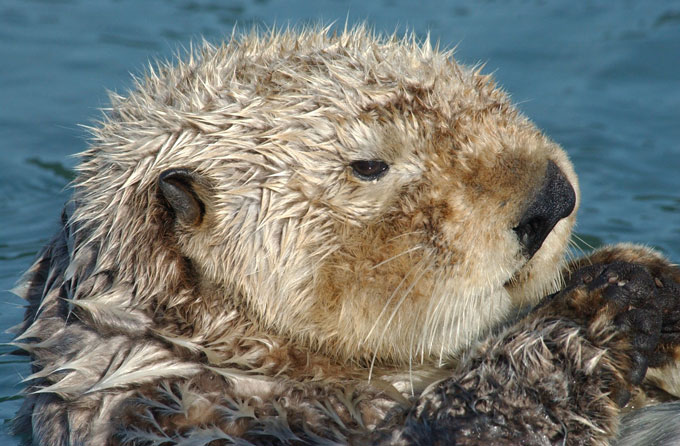This post was originally published on this site
Sea otters’ secret to staying warm isn’t in thick stores of blubber. It’s in their muscles.
Leaks in the energy-generating parts of muscle cells help otters maintain a resting metabolism three times as fast as predicted for a creature their size, researchers report in the July 9 Science. The find shows how otters meet the challenge of staying warm at sea — and could apply to other marine mammals, too.
“This could be a game changer in terms of how we think about the evolution of all marine mammals, not just sea otters,” says Terrie Williams, an ecophysiologist at the University of California, Santa Cruz, who was not involved in the study. To dwell in cold oceans, mammals must have developed ways to regulate their body temperature amid the chill. “To me, this is probably one of the clearest pieces of evidence saying, ‘Here’s how they did it,’” Williams says.
Other marine mammals have high metabolisms to cope with cold water, too, but they also often rely on large bodies and blubber to stay toasty (SN: 12/14/18). Sea otters are lean and compact, the smallest mammals in the ocean, bobbing like furry barrels on waves. And the insulating properties of sea otters’ fur — the densest on the planet — can’t fully protect them from losing too much heat. Water transfers heat 23 times as efficiently as air, and small bodies with less surface area lose heat faster, even when covered in fluff.
“Being a small-bodied marine mammal in cold waters presents a real thermal challenge,” says Traver Wright, a comparative physiologist at Texas A&M University in College Station. Scientists already knew sea otters rely on an extreme metabolism to maintain, on average, a 37° Celsius body temperature, eating 25 percent of their body mass in food every day (SN: 6/13/14). But researchers didn’t understand the cellular origins of “that revved-up metabolism for heat generation,” Wright says.
Wright and colleagues searched for the heat source in otters’ muscles. Skeletal muscle makes up 40 to 50 percent of most mammals’ body mass, so it affects the whole body’s metabolism. The team collected tissue from 21 captive and wild sea otters, ranging from babies to adults. Then, using a device called a respirometer, researchers measured otter muscle cells’ respiratory capacity in different states of oxygen flow compared with other animals — including humans, Iditarod sled dogs and elephant seals. The rate of oxygen flow offers an indirect measurement of cells’ heat production.

Leaks in mitochondria — the energy-generating part of cells — generate extra heat and cause sea otters’ extreme metabolism, the researchers found. Metabolism describes how food gets converted into energy in cells. Mitochondria pump protons across their inner membrane to store energy that can be used to power the cell. But if those protons leak back over the membrane before being used for work, that energy is lost as heat. Because these leaks increase the amount of energy lost as heat, otters need to eat more food to make up for that lost energy, revving up their metabolism.
Other mammals — including extremely small mice with high metabolisms — can also generate heat this way. But sea otters are much better at it: These leaks account for about 40 percent of otters’ muscle cells’ total respiratory capacity, higher than any known mammal. Producing heat this way helps the animals stay comfortable in 0° C Pacific waters. “That message is loud and clear, and just brilliant,” Williams says.
Sea otters’ high leak capacity “is not necessarily what they’re running all the time,” Wright says, but probably can be activated when otters need to generate more warmth. Scientists don’t yet know how otters’ cells turn this process on and off.
Baby otters don’t yet have the muscle mass to stay warm through these leaks, but their muscle cells generate heat at adult rates, the researchers found, showing that leak begins early. Finding similar leak capacities in wild and captive otters of different ages suggests that these leaks are the “driving force” behind otters’ metabolism, Wright says.
It’s not yet clear if otters inherit this trait or develop it with exposure to cold water. “We don’t know if this is inherent,” Wright says, “or if this is something that quickly comes on after birth as a means of generating heat on demand.”
Finding the cellular source of sea otters’ souped-up metabolism could help scientists better understand how other marine mammals cope with frigid water. And it could lead to new insights into how the ancestors of these creatures first evolved to live and thrive in the seas.
